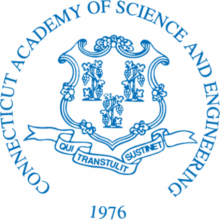“Doing science is like doing puzzles,” notes Dr. Michael Snyder, former Director of the Yale Center for Genomics and Proteomics and the recipient of the 2007 Connecticut Medal of Science Award. Dr. Snyder should know, since he studies one of science’s greatest puzzles—the mystery of the human genome. Dr. Snyder’s research provides explanations for how and why we are each different from one another, as well as helps scientists to “understand the basis of mutations and genetic disease.”
Michael is the fifth child in a family of six children. He grew up in rural Pennsylvania, where his father worked as an accountant and his mother was a schoolteacher who instilled a “great curiosity about everything.” Michael spent much of his childhood playing outside, and helping care for the family’s pets and farm animals. It was in an advanced high school chemistry class that his formal interest in science was sparked by a teacher who gave Michael and his fellow students freedom to conduct their own experiments. Michael’s early achievements were recognized with the Bausch & Lomb Honorary Science Award, paving the way for his entrance to the University of Rochester, followed by his graduate studies at the California Institute of Technology. At Cal Tech, Michael trained with Dr. Norman Davidson, a pioneer in researching recombinant DNA, and one of the most influential people in Michael’s career. While working with Drosophila (fruit flies), Michael discovered that a particular gene was inactivated by a piece of DNA that jumped around in the genome. This early discovery and his subsequent postdoctoral work with Dr. Ronald Davis at Stanford University, who stressed the value of creating one’s own tools, led Michael “to research fundamental biological questions with novel technological approaches.” At Yale, he pioneered approaches for studying thousands of genes and proteins at the same time.
Dr. Snyder uses a car analogy to explain his work. If we want to understand how a car operates, it is not enough to observe only one component: we need to observe how many parts are integrated and work together. It is the same with genes and their system of operation. In the past, scientists were able to study only one gene at a time, but by working with yeast and then later with human cells, Dr. Snyder developed techniques for identifying and characterizing the functions of thousands of genes and the proteins they encode simultaneously. One method developed in Dr. Snyder’s lab was the ChIP chip procedure for studying the hundreds of gene targets controlled by protein regulators. Dr. Snyder’s laboratory found that a major difference between species derives from how genes are regulated; this work is valuable for understanding how humans and chimpanzees are different. His laboratory also developed protein microarrays which allow researchers to discover the functions of proteins, and how they are regulated; they are also valuable for drug discovery because they help determine which drugs bind to which proteins to exert their effects.
Among his many awards and honors, Dr. Snyder received the 1987 Pew Scholar Award and the 2000 Burroughs Wellcome Scholar Award. He has been elected to the board of directors of the Genetics Society of America and is president of the US Human Proteome Organization. He has published extensively and founded Protometrix, a company that manufactures protein chips that can be used by other labs for drug discovery. Dr. Snyder encourages young people to “be curious and do your own thing.” He thoroughly enjoys his work and believes that discovering what you really like to do, asking questions and solving puzzles goes a long way in science. Snyder moved to California in July 2009 after being named chair of the Department of Genetics at Stanford University School of Medicine.


